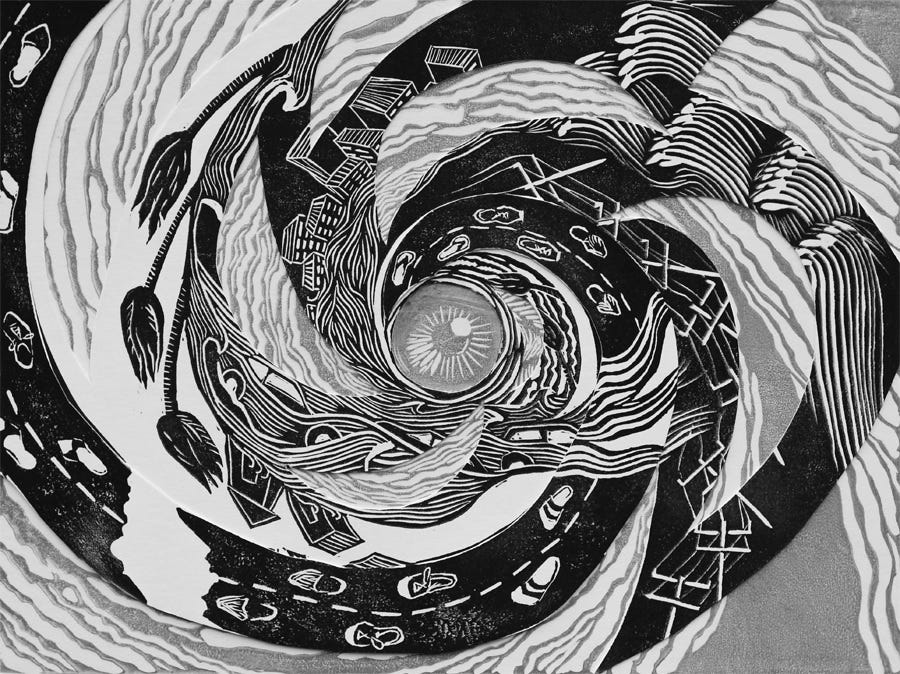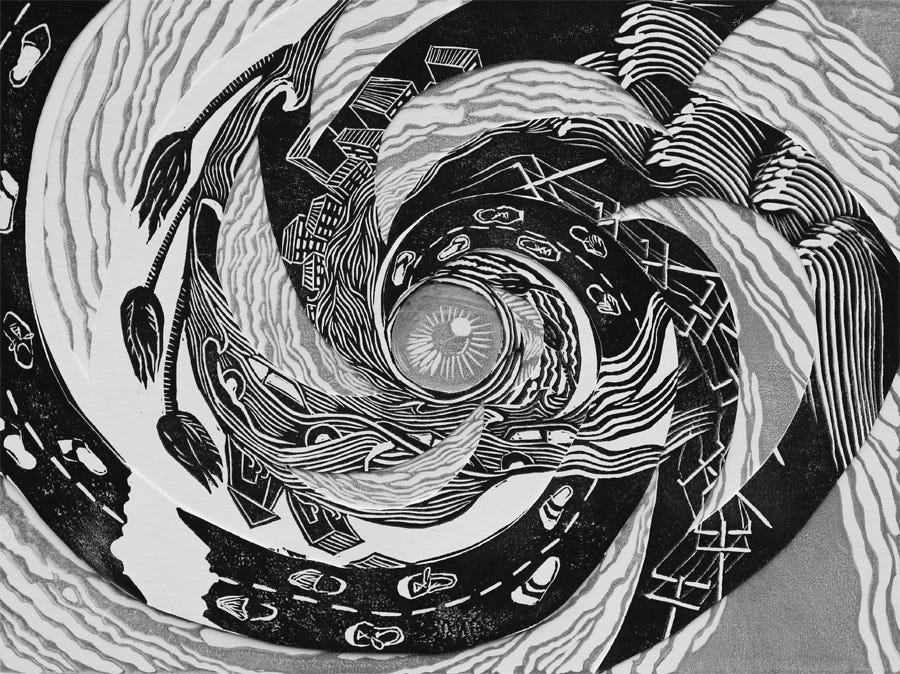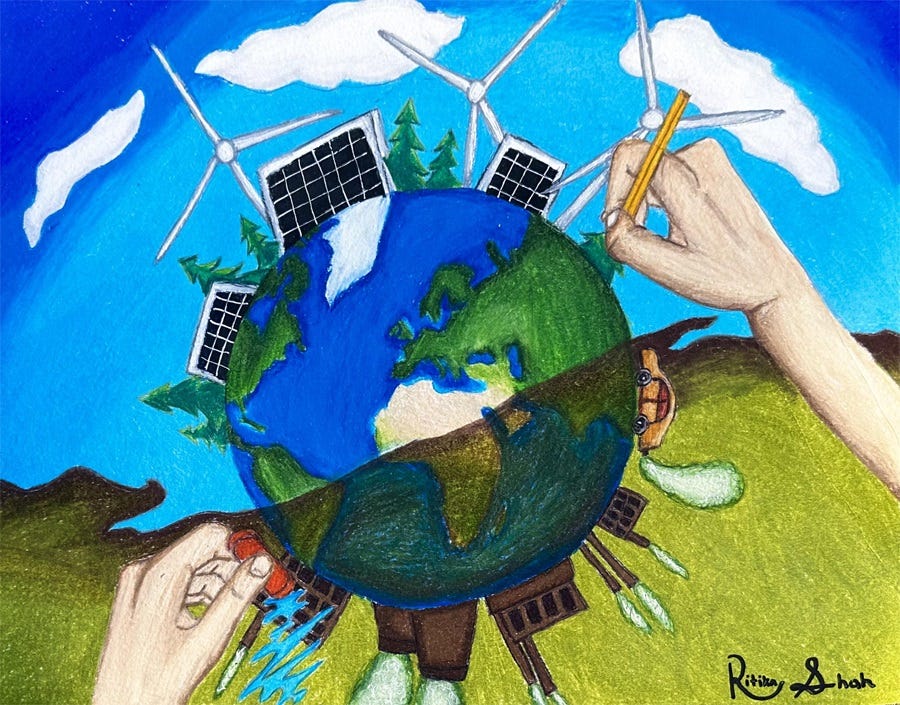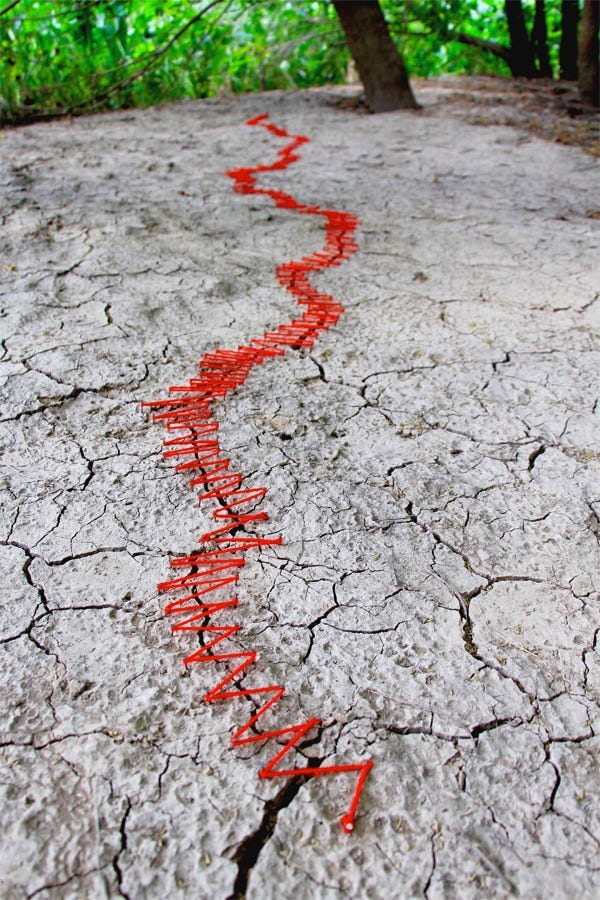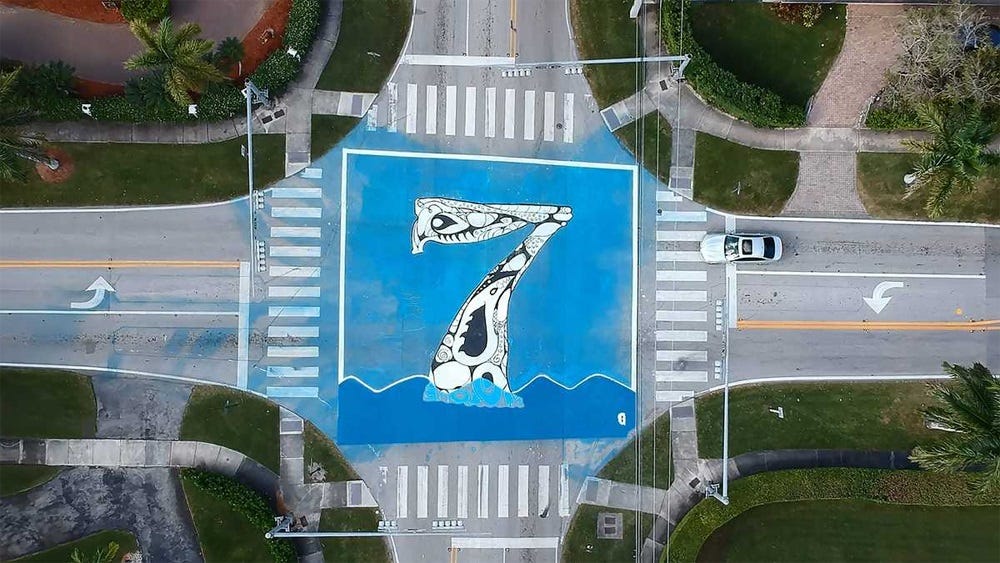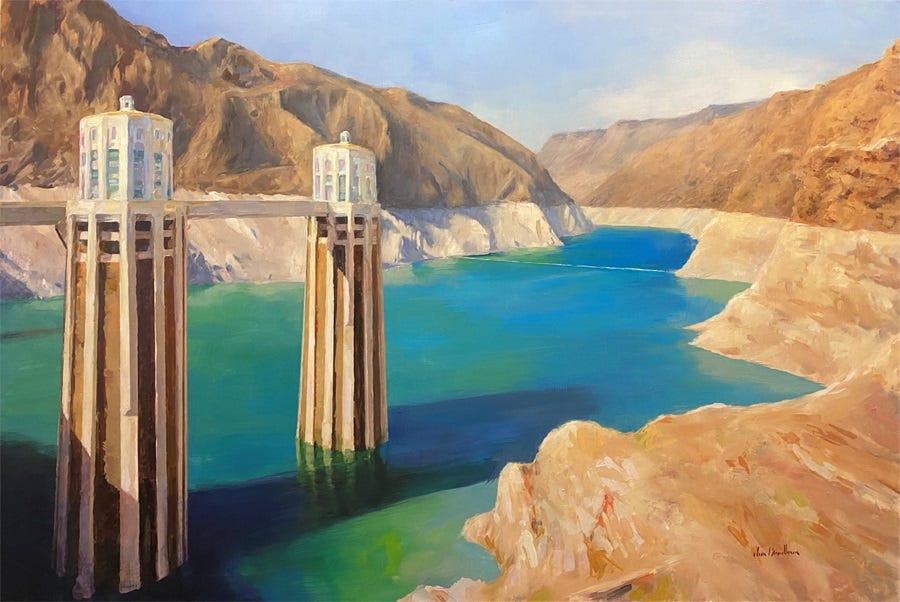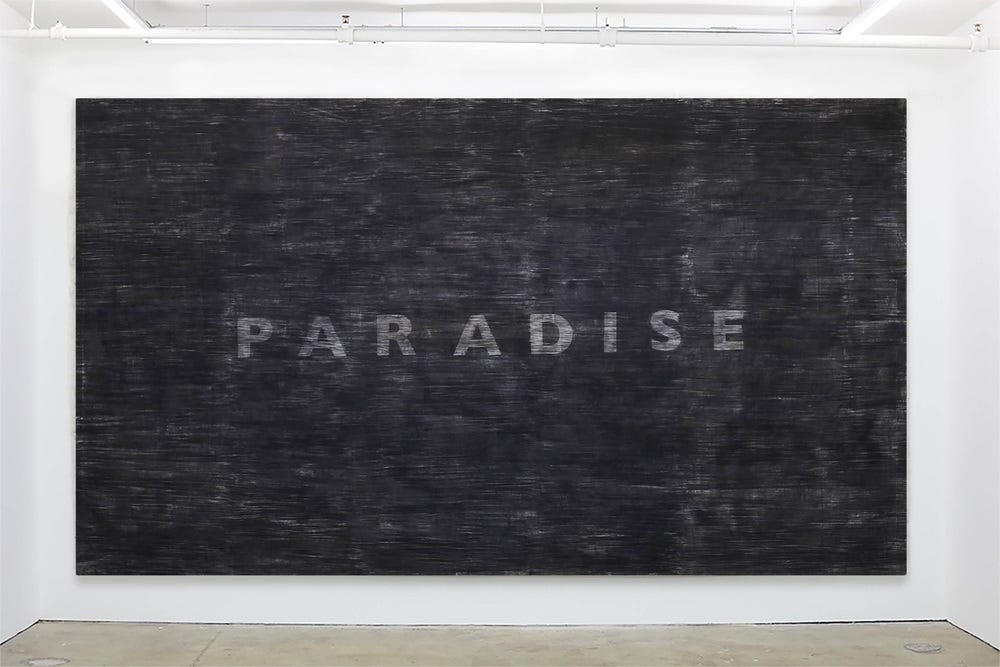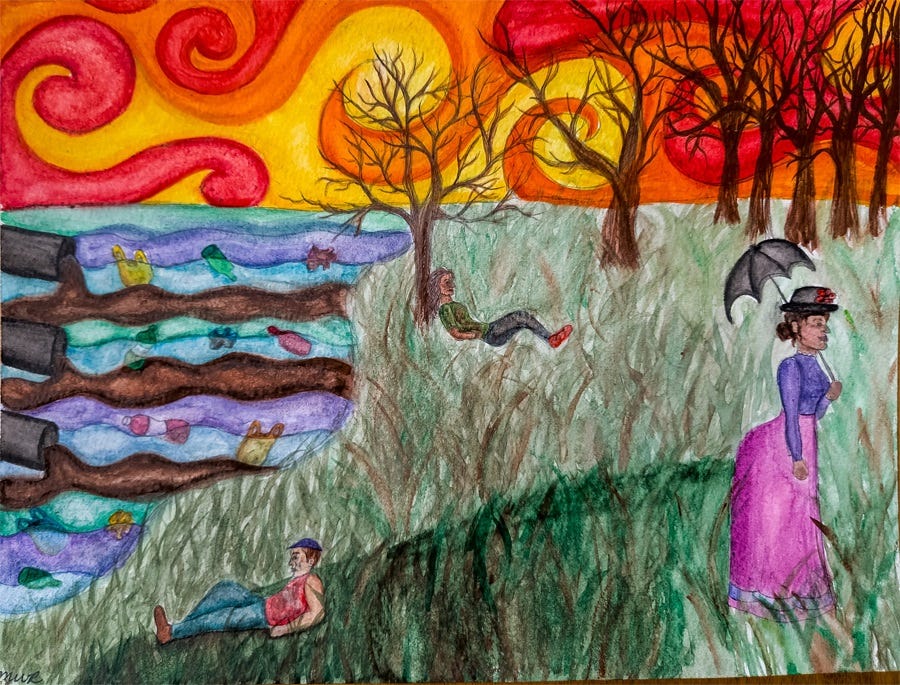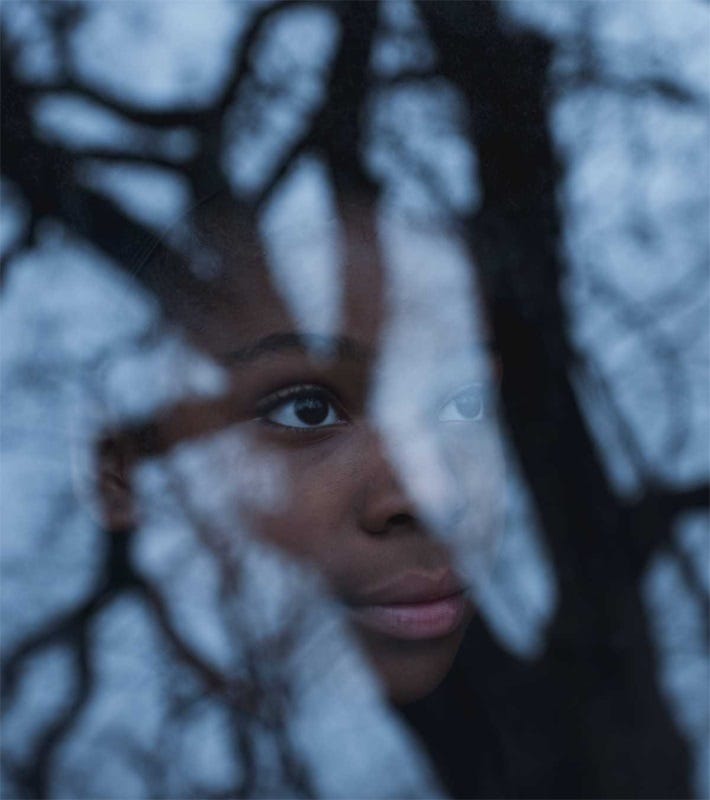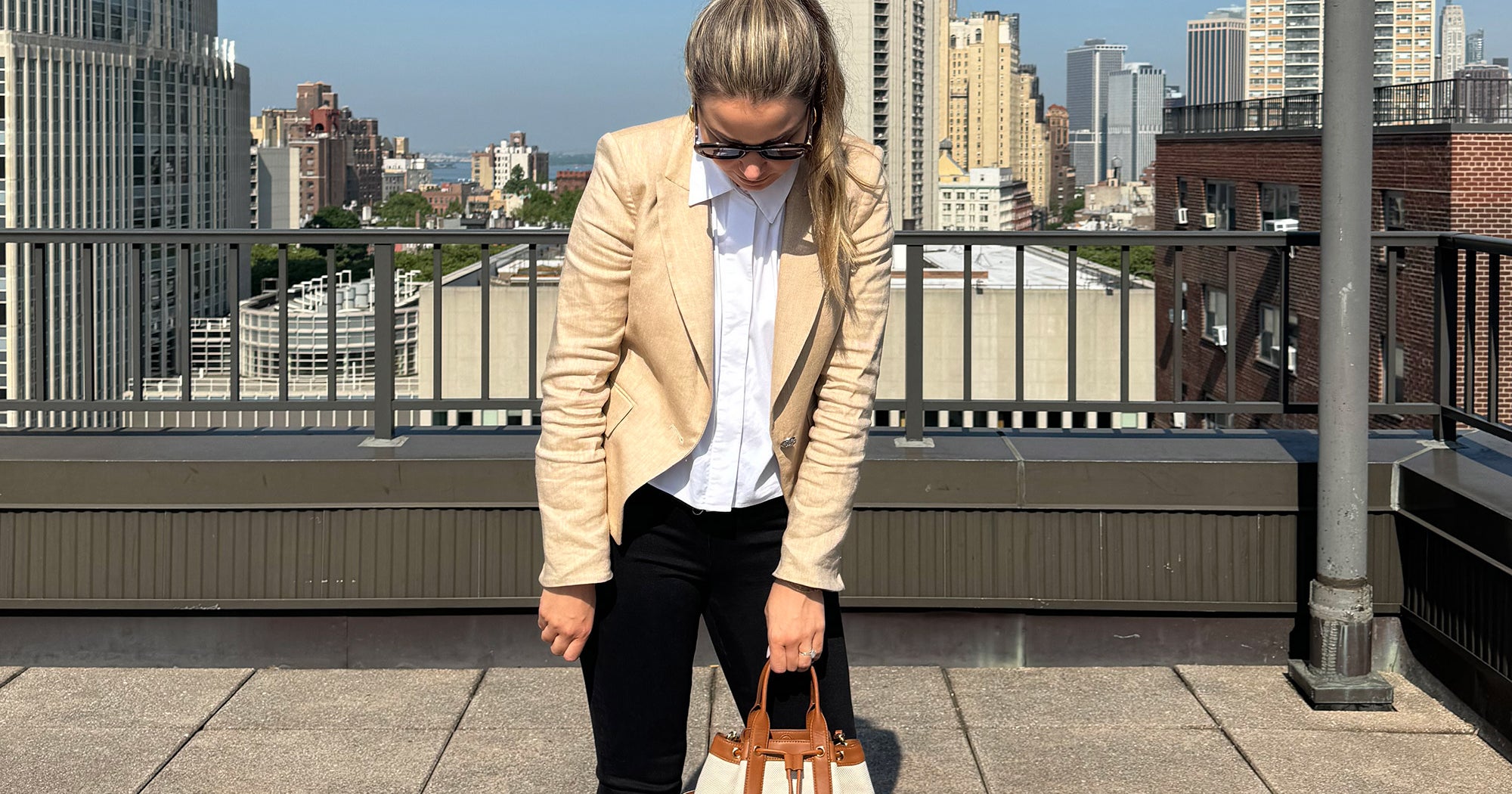In our last couple posts on climate change, we’ve included as header images some art that was submitted for a national competition in conjunction with the Fifth National Climate Assessment, aka NCA5, the periodic check-in on the state of the climate that’s compiled by hundreds of America’s top climate scientists.
In addition to the report’s detailed discussions of how climate change is affecting the USA, as well as how our efforts to reduce greenhouse gases are going (Summary: We’re up shit creek, but the paddle is starting to make a difference, so paddle like crazy!), this edition of the report includes, for the first time, an art competition and even a poem by the current US Poet Laureate, Ada Limón. There’s even a podcast for those of you who like having stuff in your ears while you’re exercising, doing chores, or driving your car (as little as necessary, right?).
It’s a pretty big contrast to how Donald Trump tried to hide the Fourth Assessment in 2018, when the report was released late on the Friday after Thanksgiving, and that only because Congress mandated the reports in law, so Trump couldn’t memory hole it altogether. Team Biden wants you to spend some time with this comprehensive public document, even if you only look at the art and play around with the interactive maps that let you see how your community will be affected under various warming scenarios.
Let’s start with Ada Limón’s poem, titled “Startlement,” with its themes of unity with nature and with each other. It’s really a lovely, short work:
Startlement
It is a forgotten pleasure, the pleasure
of the unexpected blue-bellied lizard
skittering off his sun spot rock, the flicker
of an unknown bird by the bus stop.
To think, perhaps, we are not distinguishable
and therefore no loneliness can exist here.
Species to species in the same blue air, smoke—
wing flutter buzzing, a car horn coming.
So many unknown languages, to think we have
only honored this strange human tongue.
If you sit by the riverside, you see a culmination
of all things upstream. We know now,
we were never at the circle’s center, instead
all around us something is living or trying to live.
The world says, What we are becoming, we are
becoming together.
The world says, One type of dream has ended
and another has just begun.
The world says, Once we were separate,
and now we must move in unison.
That other guy never had poetry. Also, cue the weird rightwing religious freaks complaining that “we were never at the circle’s center” means this is a pagan, Jebus-hating poem because humans have dominion over the earth — which is why it’s such a mess.
Now, some art! There were more than 800 submissions, and works by 92 artists were included in the gallery, including quite a few works in the “Youth” category, because you gotta indoctrinate the young folks with Godless climate ideology, you know.
We really like this one, “Redrawing the Earth,” by eighth-grader Ritika Shah. (She’s identified only as “Ritika S.” on the website because the youts have only an initial of their last names. It’s the internet and people are the worst, thanks in part to the other guy and his cult, too. Sigh.)
Ritika got to introduce Joe Biden at his speech Tuesday, with her drawing right up there on the soundstage, and he said he hoped she’d remember him when she’s president.
Ritika said in her artist’s statement that she wanted to
convey that we can help reverse the effects of climate change. One hand is erasing the pollution caused by industrialization the world over, and the other is redrawing actions to restore the Earth’s beauty. … I hope people learn from my art that they can help change the world by just doing simple things like driving less, not littering, and maybe even setting up solar panels or wind turbines. The effects of climate change are only in our hands, so we should do whatever we can to help.
Hey! The report itself also says that the climate future is “in human hands,” and we don’t even think Ritika had a copy to borrow from. Neat kid.
This is “Keep it Together,” by Tammy West, a site-specific work made by pounding nails into drought-dried Texas earth, connected with red string to suggest sutures helping a damaged Earth heal. “I wanted this piece to convey the desperate situation that we are in […]. If we must resort to tying our world back together, we have nothing.”
“Elevation Drive, 7 Feet above Sea Level,” by Xavier Cortada. 2018, water-based paint on asphalt.
We can’t improve on the artist’s statement:
This street intersection mural in Pinecrest, Florida depicts the location’s elevation above sea level. Painted intersections, coupled with Underwater Markers (elevation yard signs) that residents place in their front yards, make the issue of climate change impossible to ignore. Mapping the topography of their community, neighbors reveal an alarming reality: declining property values, increased flood insurance costs, failing septic tanks, compromised infrastructure, climate gentrification, and collapsing ecosystems. The socially engaged art work is aimed at revealing the vulnerability of coastal communities to rising seas, sparking climate conversations, and catalyzing civic engagement.
And then we suppose Ron DeSantis banned it, we don’t know.
“Drought’s Edge Illuminated” by Jon Bradham. 2021, oil on linen.
This painting shows the beauty of the huge built environment and the colors and forms of nature. It also shows the stark problem of drought and overuse of water as populations grow, particularly in areas that are not predisposed to large human cities and agriculture. The bone-like wall of the shrinking lake should be a wakeup call to us all.
Thankfully, no Mafia victims’ bodies in barrels in this one.
“It Doesn’t Look Like Paradise Anymore (Camp Fire 2018)” by Cara Despain. 2019, carbon residue from burnt debris on muslin.
Wow. Just, wow:
For the last four years, I’ve collected burnt debris from wildfires and fires in the urban-interface zone in the western United States. I use them to create “carbon paintings” that serve as markers of a changing climate and sustained forest mismanagement, existing in memoriam of the consequences of human habitation on the planet. The text is the location of the fire, in this case Paradise, CA. These pure black expanses of soot still smell of smoke and are meant to conceptually inhabit the lineage of landscape painting while conveying the new reality of western lands’ spent/wrecked vistas and places.
“Sunday in the Park with Climate Change,” Youth entry by Mikaela R., Ninth Grade. 2023, Watercolor.
Teenagers can be wonderful smartasses, and they’ll need all the snark they can get in the coming decades. This parody of Seurat gets right to the point.
We’ll close with this quietly hopeful — maybe — photo by Jason Lindsey, “Reflecting Forward No. 12” (2019).
Whether it’s hopeful kind of depends on us, right now, doesn’t it?
This project was inspired by my 13-year-old son who asked about climate change and what the world will look like in the future. I had only murky visions of that future myself and could not give him a clear answer. As a father, I hated that I could not provide much clarity for my son and knew I needed to explore this idea with a photography project. These portraits explore the uncertain futures of the next generation that will be struck the hardest by the impacts of climate change.
Damn. We owe it to the kids to leave them a world that’s at least starting to heal.
Bravo to all the artists; go look!
OPEN THREAD.
[Art x Climate at NCA5 / Fifth National Climate Assessment]
Yr Wonkette is funded entirely by reader donations. If you can, please subscribe, or if you prefer a one-time donation, we have the hopey-changey button for you.







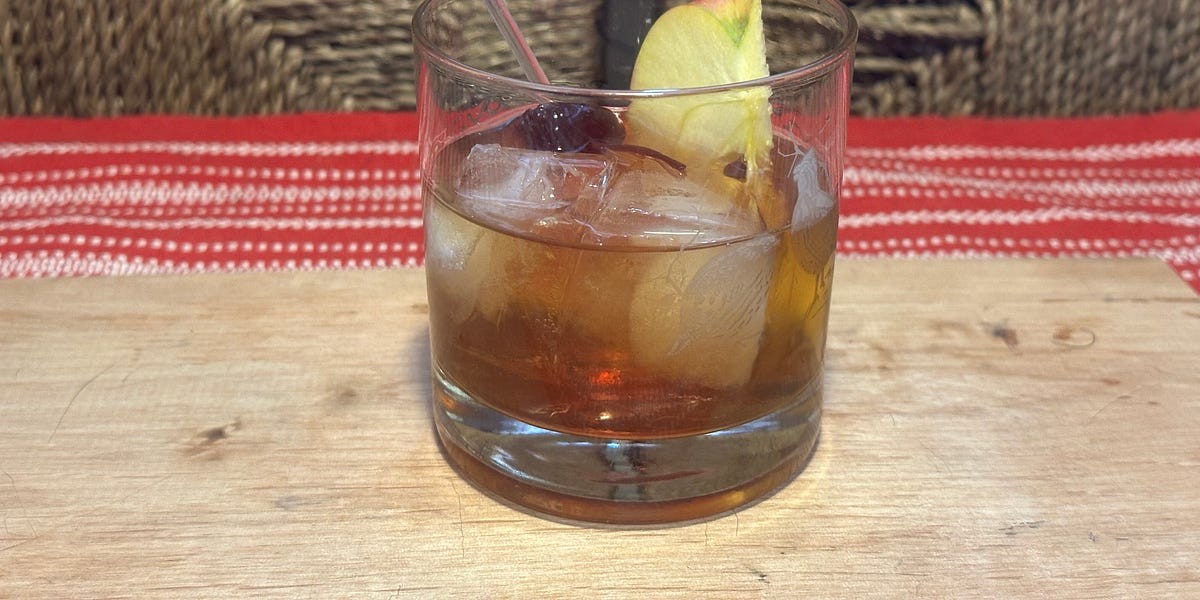
















































![Social Media Spring Cleaning [Infographic] Social Media Spring Cleaning [Infographic]](https://imgproxy.divecdn.com/9e7sW3TubFHM00yvXe5zvvbhAVriJiGqS8xmVFLPC6s/g:ce/rs:fit:770:435/Z3M6Ly9kaXZlc2l0ZS1zdG9yYWdlL2RpdmVpbWFnZS9zb2NpYWxfc3ByaW5nX2NsZWFuaW5nMi5wbmc=.webp)
![5 Ways to Improve Your LinkedIn Marketing Efforts in 2025 [Infographic] 5 Ways to Improve Your LinkedIn Marketing Efforts in 2025 [Infographic]](https://imgproxy.divecdn.com/Hv-m77iIkXSAtB3IEwA3XAuouMwkZApIeDGDnLy5Yhs/g:ce/rs:fit:770:435/Z3M6Ly9kaXZlc2l0ZS1zdG9yYWdlL2RpdmVpbWFnZS9saW5rZWRpbl9zdHJhdGVneV9pbmZvMi5wbmc=.webp)



